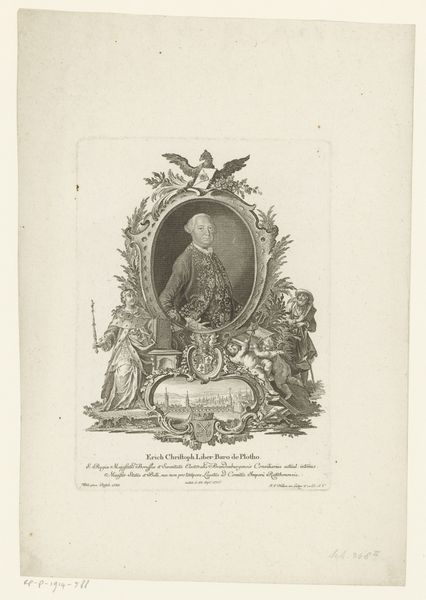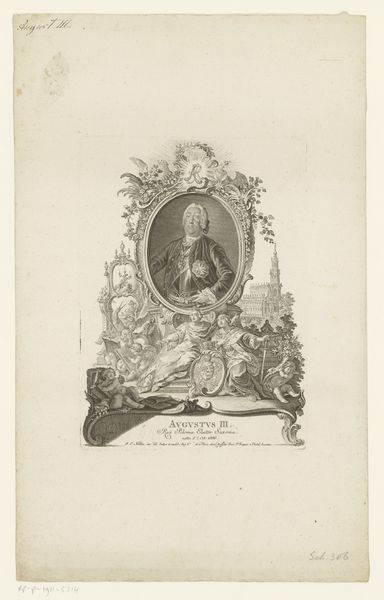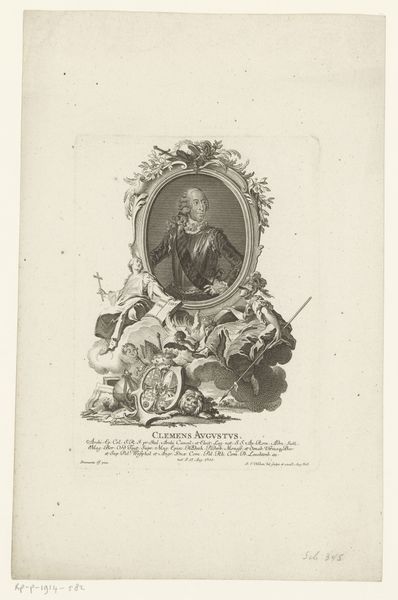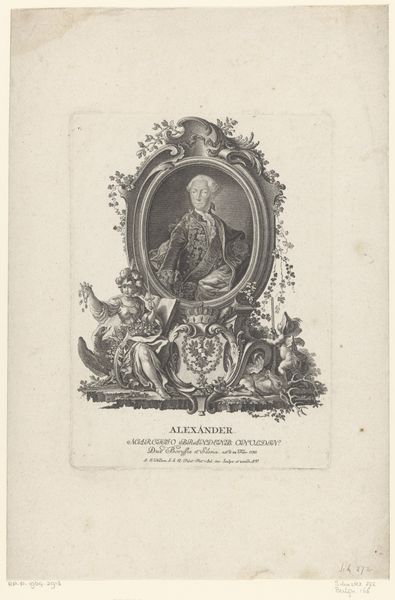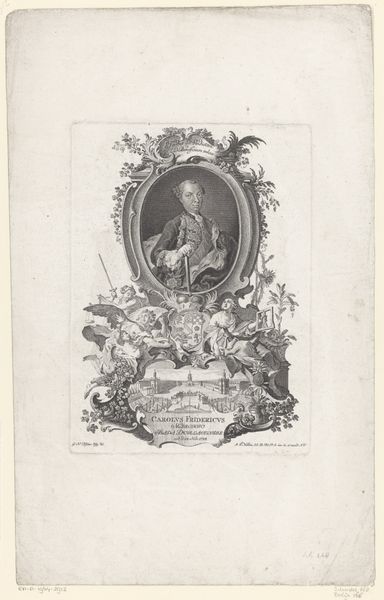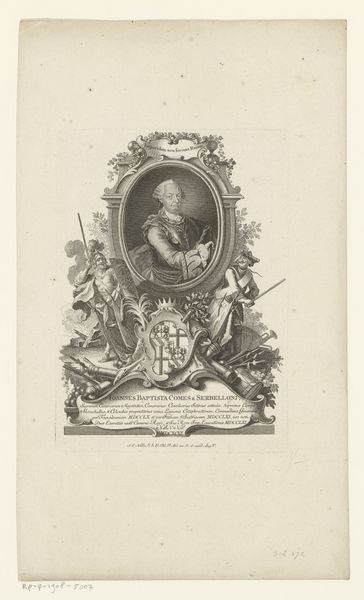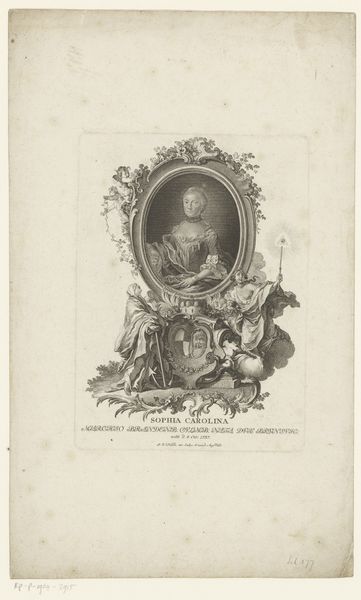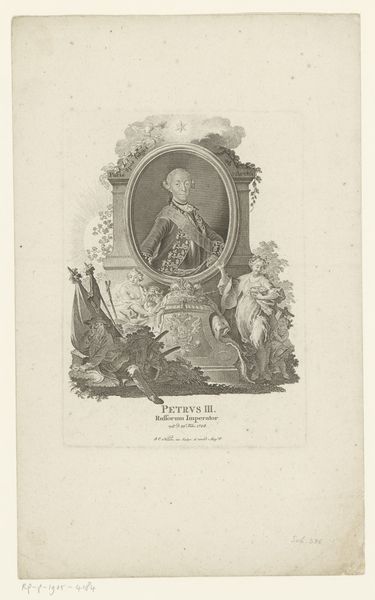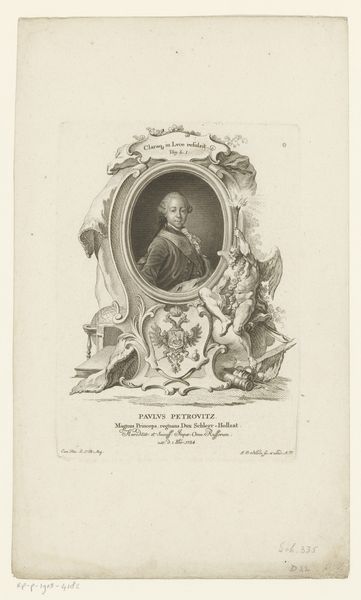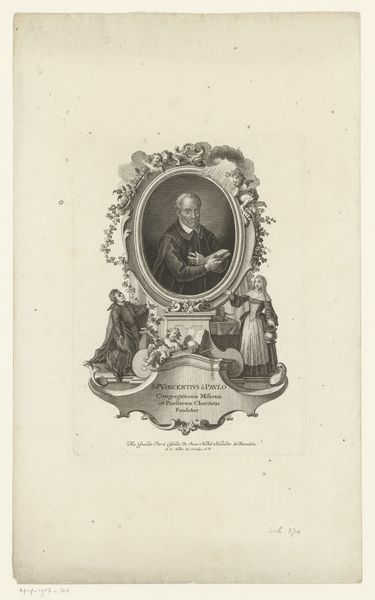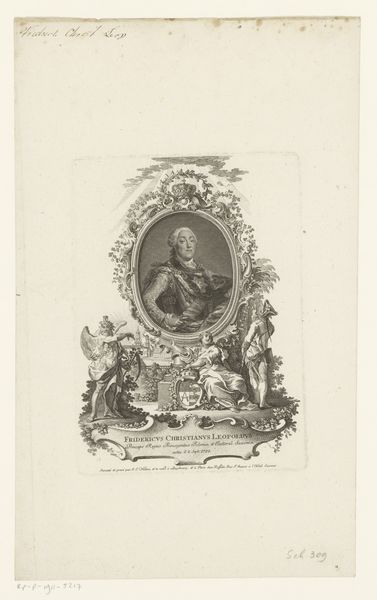
Dimensions: height 224 mm, width 163 mm
Copyright: Rijks Museum: Open Domain
Curator: Johann Esaias Nilson created this engraving sometime between 1752 and 1788. The work, titled *Portret van Frederik Eugenius van Württemberg*, depicts its subject in a decorative oval frame. Editor: My first impression is that it's very typical of its time. So much effort put into signaling power and status, a sort of celebration of aristocracy. I wonder about the politics of image-making in this period. Curator: Absolutely. It's crucial to remember the societal context of these images. This portrait, specifically, plays into a discourse of hereditary power. Frederick Eugene was, after all, the Duke of Württemberg. These aren’t just pictures; they’re statements. Editor: What can we say about its creation as a printed image? It would have been distributed, reproduced… serving a clear function of propagating an image of power. How would such images have been perceived by different classes? Curator: Exactly. Nilson likely aimed to create an easily reproducible image to be distributed amongst the aristocracy, solidifying their rule and portraying a particular ideal. Consider, also, that Frederick served as Governor of the Duchy. These positions and associated patronage determined both what kind of imagery was produced, and what stories were allowed to be told. Editor: What I find compelling is that we can use pieces like this to open up discussion regarding gender roles and how expressions of power get constructed, communicated, and sometimes contested in visual culture. What does it say about gender and identity? What assumptions is Nilson making, and for what audiences? Curator: Very true. The composition, materials and imagery converge into something designed to uphold the subject's status. As an engraving intended for broad distribution, how might its meaning transform through circulation and across socioeconomic lines? What new possibilities does the distribution of reproducible portraiture create? Editor: Thinking about it more, these details invite consideration about the dynamics of class and power. It reminds us that even seemingly simple portraits can hold deeper societal significance. Curator: Precisely. By examining these works through a socio-political lens, we gain valuable insight.
Comments
No comments
Be the first to comment and join the conversation on the ultimate creative platform.
